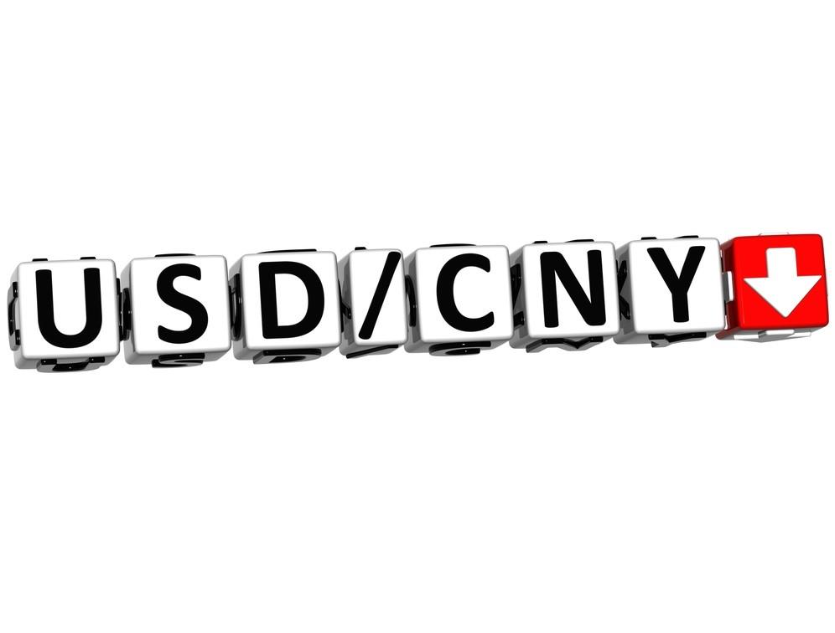Against the backdrop of fluctuating Fed rate-cut expectations, the US dollar has been choppy, while the renminbi has shown strong resilience. As of 22 November, the onshore USD/CNY rate was approaching 7.09, at one point touching 7.0908, a new one-year high. Under the combined influence of expectations for a Fed policy pivot and the PBOC’s efforts to stabilize the currency, the RMB is steadily moving toward the key psychological level of 7.0.

RMB Performance in 2025 So Far
Looking back at 2025, the RMB has gone through a period of notable volatility against the US dollar. At the beginning of the year, USD/CNY was trading around 7.27. It then weakened to as low as 7.42879 on 8 April. Since then, the currency has embarked on a sustained strengthening trend.
According to Wind data, the onshore RMB has been grinding higher since early April. From the year’s low of 7.3498 on 9 April, it has appreciated steadily. As of 22 November, the RMB central parity rate has risen by around 1,000 pips year-to-date. Measured from the start of the year, the onshore RMB has gained about 1.48% against the US dollar, while the offshore RMB has risen by 2.03%.
External Drivers and Domestic Support
The immediate driver of the stronger RMB has been the structural weakening of the US Dollar Index. In September, the Federal Reserve cut interest rates by 25 basis points, lowering the federal funds rate target range to 4.00%–4.25%. After the Fed’s decision, the US Dollar Index fell below its early-July low to 96.22, the weakest level since February 2022. The Fed’s policy path has become the key variable. As markets increasingly price in the possibility of further rate cuts by year-end, the dollar is widely expected to move lower from here.

Beyond external factors, the RMB is also supported by domestic fundamentals and improved market sentiment. On 7 May, the PBOC and other authorities rolled out a package of financial measures, including interest-rate cuts and reserve requirement ratio (RRR) reductions, while the pace of fiscal spending also accelerated significantly. These steps have provided intrinsic support for the currency.
Wang Qing, chief macro analyst at Dongfang Jincheng, noted that proactive macro policies have strengthened the resilience of China’s economy and that the RMB’s appreciation has been driven mainly by these domestic factors.
Rising demand for FX settlement has also become an important force behind the stronger RMB. In September 2025 alone, the FX settlement and sales surplus reached USD 51 billion, up from USD 14.6 billion in August and the highest reading since January 2021. Wang commented: “The recent strength of the RMB and its appreciation to some extent have led to increased settlement demand and weaker purchase demand. We can see that in September, banks’ client FX settlement ratios rose significantly, while client FX sales ratios fell noticeably.”
If the RMB were to break above 7.10 rapidly, some corporates with outstanding FX receipts might rush to settle, and if that behavior snowballs, it could amplify exchange-rate volatility. However, Dongwu Securities analyst Lu Zhe believes that the probability of another round of “panic settlement” in 2025 is low, as exporters have improved their FX hedging practices. He expects any settlement wave this time to unfold in a more gradual and orderly fashion.
Prospects for Breaking the “7.0” Level
Whether the RMB can break through the key psychological level of 7.0 against the dollar has become a major focus for markets. Many global investment banks are optimistic on the currency’s medium-term outlook.
Citi expects the RMB to appreciate “gradually, slowly and in a stable manner.” Geoffrey Liao, Head of Investment Strategy and Asset Allocation at Citi, said that the RMB faces “no significant depreciation pressure” and that the PBOC’s recent central parity fixings have consistently come in stronger than market models would suggest. HSBC Global Research is even more upbeat, revising its year-end USD/CNY forecasts down to 7.05 and 6.95 for this year and next year, respectively. Deutsche Bank forecasts that the RMB will strengthen to 7.0 by end-2025 and further to 6.7 by end-2026.
Lu Zhe of Dongwu Securities estimates that “under a baseline scenario where counter-cyclical policies provide a floor for growth, USD/CNY should move toward 7.0 by year-end. In an optimistic scenario, our models suggest a new equilibrium around 6.7.”
That said, some analysts are more cautious about the near-term prospects of breaking below 7.0. Overall, they believe the probability of moving through that level in the short term is not high. Ming Ming, chief economist at CITIC Securities, commented that the current domestic fundamentals are playing more of a stabilizing rather than a strongly appreciating role for the currency, and that “a break below 7.0 will still require additional catalysts.”
Impact on the Stock Market
In a report published on 26 May, Goldman Sachs pointed out that RMB appreciation tends to benefit China’s equity market. Goldman’s Chief China Equity Strategist Liu Jinxin said: “Historically, when the RMB appreciates – both against the US dollar and a trade-weighted basket – China’s stock market tends to perform well, which is consistent with trading patterns in most emerging Asian markets.”
Goldman’s research suggests that every 1% appreciation of the RMB against the US dollar can lift returns on Chinese equities by around 3%, including FX translation effects. By sector, when the RMB strengthens against the dollar, H-share consumer discretionary, real estate and diversified financials (brokerages) tend to outperform their local benchmarks, while onshore A-share materials and technology sectors also typically beat the broader market.
Looking ahead, whether the RMB can break through the key “7.0” psychological level will depend on a combination of domestic and external factors. What is clear, however, is that under the PBOC’s stated goal of “firmly guarding against the risk of excessive exchange-rate overshooting,” the RMB is likely to continue to move in a pattern of mild, two-way fluctuations with a tendency to move inversely to the US dollar, and with relatively limited volatility overall.









